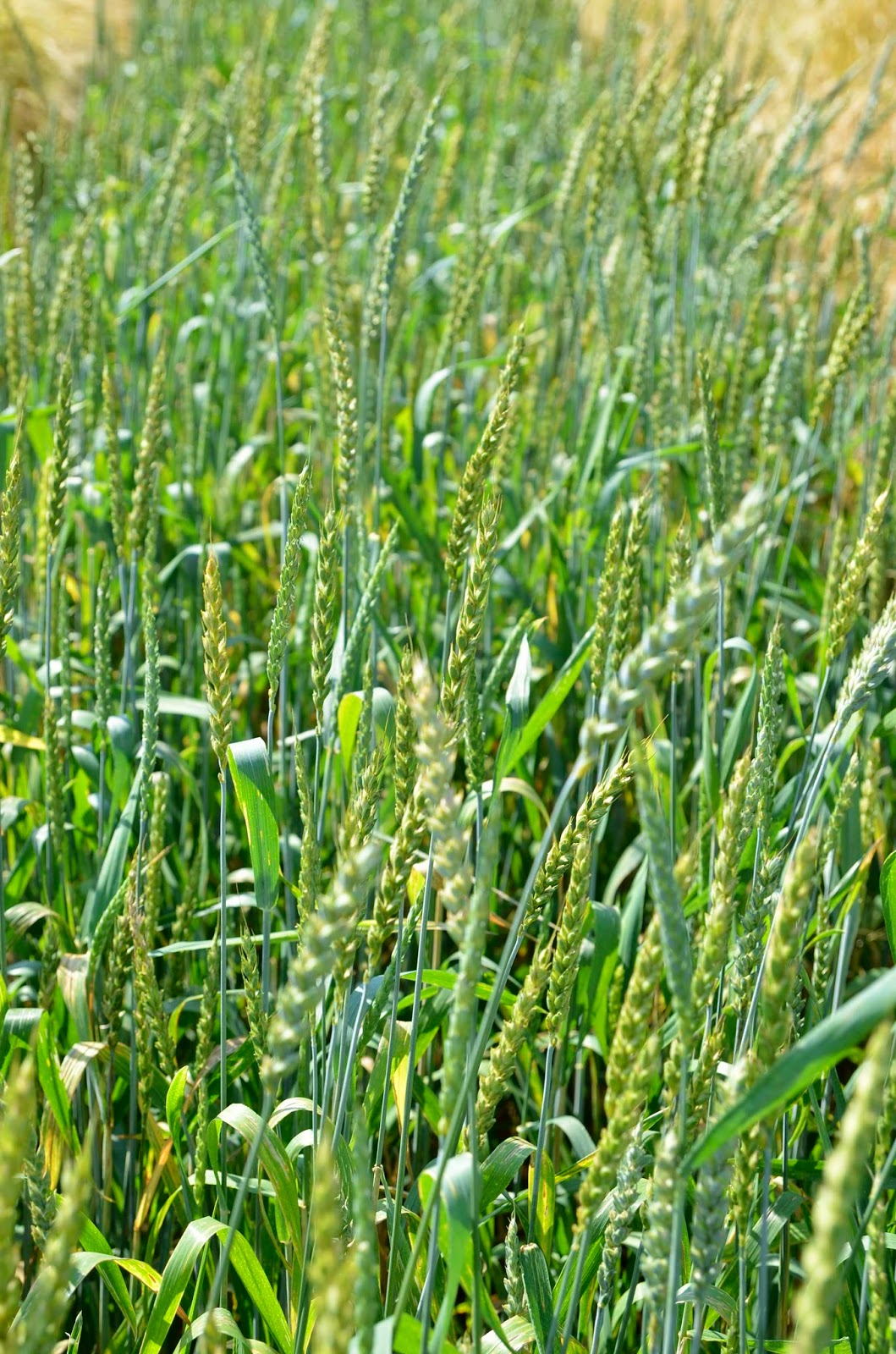Wheat can be divided and classified into groups in several ways: spring vs. winter; hard vs. soft; milling vs. feed. A less used classification (in the UK, anyway) is grain colour, probably because nearly all the wheat in the UK is red-grained. White-grained wheat lacks the tannins in the seed coat that can give bitter flavours to wholegrain, so is very suited to a range of healthy wholegrain foods. The disadvantage of white wheat is susceptibility to sprouting, which was the only weakness of 'Holdfast' wheat, released by the Plant Breeding Institute in 1935, and long considered the gold standard for UK bread making wheat quality.
 |
| Holdfast wheat grains - super quality bold clean grains (from Mike Ambrose at the Germplasm Resources Unit at the John Innes Centre). |
Nearly three years ago I had a daft idea that I scribbled down in my field notebook "white spelt??".
The origins of European spelt wheat are a subject of debate, but the most likely theory is that spelt came from a chance hybridisation between hexaploid wheat Triticum aestivum (genome = AABBDD) and tetraploid emmer Triticum turgidum (AABB), as the D genome shared by modern bread wheat and spelt is identical but the A and B genomes differ.
Spelt remained in cultivation in areas around the Alps where it was better able to tolerate colder poorer soils and is now undergoing a resurgence due to its flavour and suitability for low-input growing.
My idea was that a white-grained spelt would have a unique sweeter wholegrain flavour, possibly be suited to sowing later in autumn (a practice to control black-grass, but risks sowing into wetter colder seedbeds) and perhaps the tough glumes would help protect against moisture ingress (and so help reduce sprouting) and fungal pathogens.
Spelt can be easily hybridised with common wheat by conventional plant breeding, so I made the cross between a modern white grain wheat and spelt, grew on the progeny and selected the white grain 'spelty' plants.
This is not proper science (just curiosity-driven mucking about) so will never get a BBSRC grant for it, nor is industry-led applied science - millers haven't asked for it and farmers won't be interested in growing a lower yielding crop without a market.
Not sure about baking quality etc. as have never had enough seed - a few trial plots sown this autumn to hopefully get some grain to play with next harvest.
Probably be never more than a curiosity, but here are some photos:
 |
| Normal red spelt vs. white spelt |
 |
| Holdfast white wheat vs. white spelt - spelt grains are longer with a keel |
 |
| Spring-sown white spelt - v. late to ripen vs. spring barley, best sow in autumn |
 |
| winter-sown white spelt vs. Solstice wheat - ears much longer on the spelt |
No comments:
Post a Comment